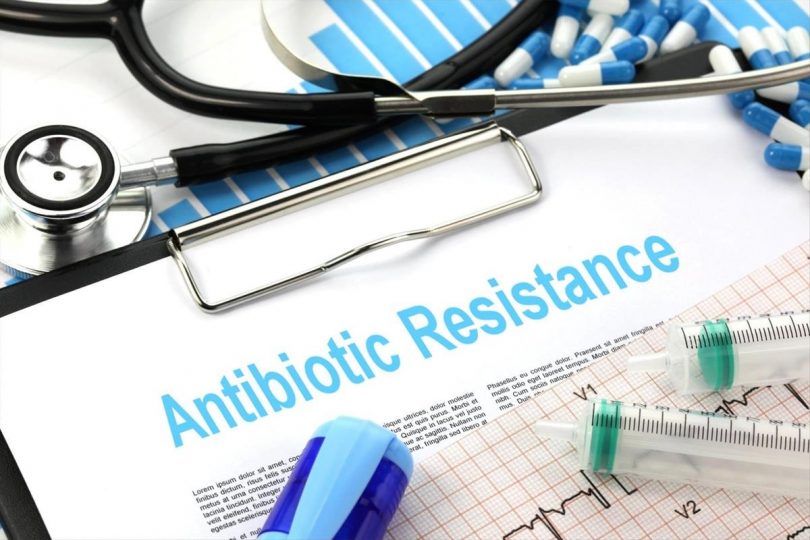The antibiotic activity of plant-derived terpenes has been widely reported, each study highlighting a distinct phenomenon. [1] For example, one study demonstrated that the hydroxyl groups (i.e., phenols and alcohols), and not the hydrocarbon groups, are responsible for the antibiotic activity of free terpenes [2]. A different study demonstrated that naturally occurring terpenes have synergistic effects with a number of antibiotics, such as the first-line tuberculostatic antibiotic rifampicin [3].
As much as traditional antibiotics have been the mainstay of treatment for microbial infections, drug resistance remains a herculean challenge. This drives up the cost of treatment, contributes to longer hospital stays, and increases mortality rates.
According to the World Health Organization (WHO), the world might soon be headed for a “post-antibiotic era” where even common infections would be difficult to treat and hence fatal. Is there an antidote that may help nip this in the bud before it’s too late?
Plant Terpenes and Antibiotic Resistance
Even with new antibiotics in the pipeline, the problem of resistance is yet to be addressed. Researchers from Sapienza University of Rome conducted a review on the potential of plant-derived terpenes in combating antibiotic-resistant infections. [1]
They concluded that plant-derived terpenes have pharmacological activity that has been elucidated through numerous clinical trials. While antibiotic activity has been shown time and again, recent studies have highlighted activity against antibiotic-resistant strains.
For example, geraniol (from essential oil of Italian strawflower) shows activity against Enterobacter aerogenes, among other Gram-negative species. It acts as an efflux pump inhibitor and lowers or reverses resistance to the antibiotic chloramphenicol [4]. Camphor (from French lavender) has activity against numerous microorganisms, including Staphylococcus aureus, Escherichia coli, and Klebsiella pneumoniae; it acts as a growth inhibitor [5]. Linalool, terpinen-4-ol, and borneol (also from French lavender) demonstrate significant (possibly synergistic) growth inhibiting activity against microorganisms such as E. coli, S. aureus, and Salmonella spp. [5].
The review continues by highlighting sesquiterpenes, diterpenes, and triterpenes. Sesquiterpene farnesol, for example, inhibits biofilm formation of Streptococcus spp. [6] and boosts β-lactam antibiotics against several resistant organisms [7]. A diterpene from chaste tree known as vitexolide A was found effective against 46 Gram-positive bacteria, including multi-drug resistant S. aureus [8]. The authors also noted that triterpenes such as α-amyrin significantly improve the efficacy of certain antibiotics (e.g., methicillin) against resistant strains of S. aureus [9].
According to the researchers, plant-derived terpenes offer potential to remedy the situation created by the post-antibiotic era. [1] As usual, there is need for further research to confirm this potential.
Image Source
Antibiotic Resistance by Nick Youngson CC BY-SA 3.0 Alpha Stock Images, via Picpedia
References
- Cappiello F, Loffredo MR, Del Plato C, et al. The revaluation of plant-derived terpenes to fight antibiotic-resistant infections. Antibiotics (Basel). 2020;9(6):325. doi:10.3390/antibiotics9060325. Journal Impact Factor: 2.921, Times Cited: 4 (Semantic Scholar)
- Guimarães AC, et al. Antibacterial activity of terpenes and terpenoids present in essential oils. Molecules (Basel, Switzerland). 2019;24(13):2471. Journal Impact Factor: 3.267, Times Cited: 48 (Semantic Scholar)
- Sieniawska E, et al. Natural terpenes influence the activity of antibiotics against isolated mycobacterium tuberculosis. Medical Principles & Practice. 2017;26:108-112. Journal Impact Factor: 1.295, Times Cited: 17 (Semantic Scholar)
- Lorenzi V, al. Geraniol restores antibiotic activities against multidrug-resistant isolates from gram-negative species. Antimicrob. Agents Chemother. 2009;53:2209–2211. Journal Impact Factor: 4.715, Times Cited: 175 (Semantic Scholar)
- Sayout A, et al. Evaluation of antibacterial activity of Lavandulapedunculata subsp. atlantica (braun-blanq.) romo essential oil and selected terpenoids against resistant bacteria strains-structure-activity relationships. Chem Biodivers. 2020: 17(e1900496). Journal Impact Factor: 2.039, Times Cited: 3 (Semantic Scholar)
- Mahizan N, et al. Terpene derivatives as a potential agent against antimicrobial resistance (amr) pathogens. Molecules. 2019;24:2631. Journal Impact Factor: 3.267, Times Cited: 28 (Semantic Scholar)
- Brilhante RS, et al. Sesquiterpene farnesol contributes to increased susceptibility to beta-lactams in strains of Burkholderia pseudomallei. Antimicrob Agents Chemother. 2012;56: 2198–2200. Journal Impact Factor: 4.715, Times Cited: 10 (PubMed)
- Corlay N, et al. Antibacterial labdane diterpenoids from Vitex vestita. J Nat Prod. 2015;78: 1348–1356. Journal Impact Factor: 4.257, Times Cited: 15 (Semantic Scholar)
- Chung PY, Navaratnam P, Chung LY. Synergistic antimicrobial activity between pentacyclic triterpenoids and antibiotics against Staphylococcus aureus strains. Annals Clin Microbial Antimicrob. 2011;10(25). Journal Impact Factor: 2.924, Times Cited: 116 (Semantic Scholar)








